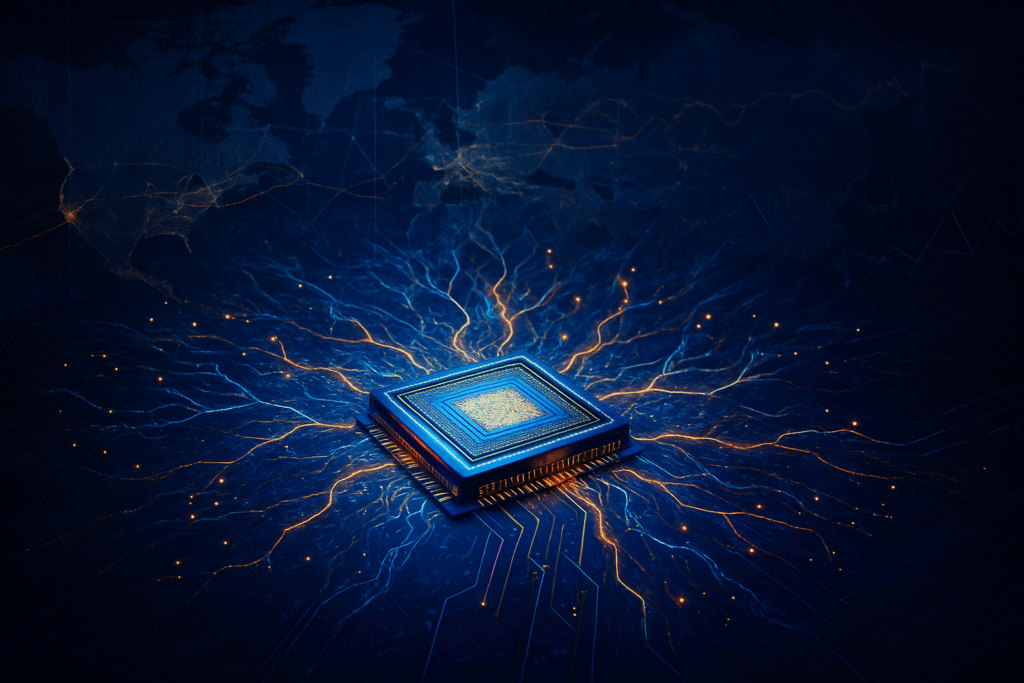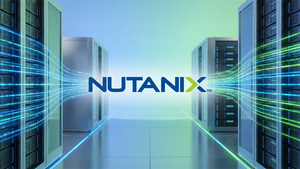
The global semiconductor industry finds itself at a pivotal juncture, navigating a complex interplay of fluctuating interest rates, an increasingly unstable geopolitical landscape, and the insatiable demand ignited by the "AI Supercycle." Far from merely reacting, chipmakers are strategically reorienting their investments and accelerating innovation, particularly in the realm of AI-related semiconductor production. This proactive stance underscores a fundamental belief that AI is not just another technological wave, but the foundational pillar of future economic and strategic power, demanding unprecedented capital expenditure and a radical rethinking of global supply chains.
The immediate significance of this strategic pivot is multifold: it’s accelerating the pace of AI development and deployment, fragmenting global supply chains into more resilient, albeit costlier, regional networks, and intensifying a global techno-nationalist race for silicon supremacy. Despite broader economic uncertainties, the AI segment of the semiconductor market is experiencing explosive growth, driving sustained R&D investment and fundamentally redefining the entire semiconductor value chain, from design to manufacturing.
The Silicon Crucible: Technical Innovations and Strategic Shifts
The core of the semiconductor industry's response lies in an unprecedented investment boom in AI hardware, often termed the "AI Supercycle." Billions are pouring into advanced chip development, manufacturing, and innovative packaging solutions, with the AI chip market projected to reach nearly $200 billion by 2030. This surge is largely driven by hyperscale cloud providers like AWS, Meta (NASDAQ: META), and Microsoft (NASDAQ: MSFT), who are optimizing their AI compute strategies and significantly increasing capital expenditure that directly benefits the semiconductor supply chain. Microsoft, for instance, plans to invest $80 billion in AI data centers, a clear indicator of the demand for specialized AI silicon.
Innovation is sharply focused on specialized AI chips, moving beyond general-purpose CPUs to Graphics Processing Units (GPUs), Neural Processing Units (NPUs), and Application-Specific Integrated Circuits (ASICs), alongside high-bandwidth memory (HBM). Companies are developing custom silicon, such as "extreme Processing Units (XPUs)," tailored to the highly specialized and demanding AI workloads of hyperscalers. This shift represents a significant departure from previous approaches, where more generalized processors handled diverse computational tasks. The current paradigm emphasizes hardware-software co-design, where chips are meticulously engineered for specific AI algorithms and frameworks to maximize efficiency and performance.
Beyond chip design, manufacturing processes are also undergoing radical transformation. AI itself is being leveraged to accelerate innovation across the semiconductor value chain. AI-driven Electronic Design Automation (EDA) tools are significantly reducing chip design times, with some reporting a 75% reduction for a 5nm chip. Furthermore, cutting-edge fabrication methods like 3D chip stacking and advanced silicon photonics integration are becoming commonplace, pushing the boundaries of what's possible in terms of density, power efficiency, and interconnectivity. Initial reactions from the AI research community and industry experts highlight both excitement over the unprecedented compute power becoming available and concern over the escalating costs and the potential for a widening gap between those with access to this advanced hardware and those without.
Geopolitical tensions, particularly between the U.S. and China, have intensified this technical focus, transforming semiconductors from a commercial commodity into a strategic national asset. The U.S. has imposed stringent export controls on advanced AI chips and manufacturing equipment to China, forcing chipmakers like Nvidia (NASDAQ: NVDA) to develop "China-compliant" products. This techno-nationalism is not only reshaping product offerings but also accelerating the diversification of manufacturing footprints, pushing towards regional self-sufficiency and resilience, often at a higher cost. The emphasis has shifted from "just-in-time" to "just-in-case" supply chain strategies, impacting everything from raw material sourcing to final assembly.
The Shifting Sands of Power: How Semiconductor Strategies Reshape the AI Corporate Landscape
The strategic reorientation of the semiconductor industry, driven by the "AI Supercycle" and geopolitical currents, is profoundly reshaping the competitive dynamics for AI companies, tech giants, and startups alike. This era of unprecedented demand for AI capabilities, coupled with nationalistic pushes for silicon sovereignty, is creating both immense opportunities for some and considerable challenges for others.
At the forefront of beneficiaries are the titans of AI chip design and manufacturing. NVIDIA (NASDAQ: NVDA) continues to hold a near-monopoly in the AI accelerator market, particularly with its GPUs and the pervasive CUDA software platform, solidifying its position as the indispensable backbone for AI training. However, Advanced Micro Devices (NASDAQ: AMD) is rapidly gaining ground with its Instinct accelerators and the open ROCm ecosystem, positioning itself as a formidable alternative. Companies like Broadcom (NASDAQ: AVGO) and Marvell Technology (NASDAQ: MRVL) are also benefiting from the massive infrastructure buildout, providing critical IP, interconnect technology, and networking solutions. The foundational manufacturers, Taiwan Semiconductor Manufacturing Company (TSMC) (NYSE: TSM) and Samsung (KRX: 005930), along with memory giants like SK Hynix (KRX: 000660), are experiencing surging demand for advanced fabrication and High-Bandwidth Memory (HBM), making them pivotal enablers of the AI revolution. Equipment manufacturers such as ASML (NASDAQ: ASML), with its near-monopoly in EUV lithography, are similarly indispensable.
For major tech giants, the imperative is clear: vertical integration. Google (NASDAQ: GOOGL), Amazon (NASDAQ: AMZN), Microsoft (NASDAQ: MSFT), and Apple (NASDAQ: AAPL) are heavily investing in developing their own custom AI chips (ASICs like Google's TPUs) to reduce dependency on third-party suppliers, optimize performance for their specific workloads, and gain a critical competitive edge. This strategy allows them to fine-tune hardware-software synergy, potentially delivering superior performance and efficiency compared to off-the-shelf solutions. For startups, however, this landscape presents a double-edged sword. While the availability of more powerful AI hardware accelerates innovation, the escalating costs of advanced chips and the intensified talent war for AI and semiconductor engineers pose significant barriers to entry and scaling. Tech giants, with their vast resources, are also adept at neutralizing early-stage threats through rapid acquisition or co-option, potentially stifling broader competition in the generative AI space.
The competitive implications extend beyond individual companies to the very structure of the AI ecosystem. Geopolitical fragmentation is leading to a "bifurcated AI world," where separate technological ecosystems and standards may emerge, hindering global R&D collaboration and product development. Export controls, like those imposed by the U.S. on China, force companies like Nvidia to create downgraded, "China-compliant" versions of their AI chips, diverting valuable R&D resources. This can lead to slower innovation cycles in restricted regions and widen the technological gap between countries. Furthermore, the shift from "just-in-time" to "just-in-case" supply chains, while enhancing resilience, inevitably leads to increased operational costs for AI development and deployment, potentially impacting profitability across the board. The immense power demands of AI-driven data centers also raise significant energy consumption concerns, necessitating continuous innovation in hardware design for greater efficiency.
The Broader Canvas: AI, Chips, and the New Global Order
The semiconductor industry's strategic pivot in response to economic volatility and geopolitical pressures, particularly in the context of AI, signifies a profound reordering of the global technological and political landscape. This is not merely an incremental shift but a fundamental transformation, elevating advanced chips from commercial commodities to critical strategic assets, akin to "digital oil" in their importance for national security, economic power, and military capabilities.
This strategic realignment fits seamlessly into the broader AI landscape as a deeply symbiotic relationship. AI's explosive growth, especially in generative models, is the primary catalyst for an unprecedented demand for specialized, high-performance, and energy-efficient semiconductors. Conversely, breakthroughs in semiconductor technology—such as extreme ultraviolet (EUV) lithography, 3D integrated circuits, and progress to smaller process nodes—are indispensable for unlocking new AI capabilities and accelerating advancements across diverse applications, from autonomous systems to healthcare. The trend towards diversification and customization of AI chips, driven by the imperative for enhanced performance and energy efficiency, further underscores this interdependence, enabling the widespread integration of AI into edge devices.
However, this transformative period is not without its significant impacts and concerns. Economically, while the global semiconductor market is projected to reach $1 trillion by 2030, largely fueled by AI, this growth comes with increased costs for advanced GPUs and a more fragmented, expensive global supply chain. Value creation is becoming highly concentrated among a few dominant players, raising questions about market consolidation. Geopolitically, the "chip war" between the United States and China has become a defining feature, with stringent export controls and nationalistic drives for self-sufficiency creating a "Silicon Curtain" that risks bifurcating technological ecosystems. This techno-nationalism, while aiming for technological sovereignty, introduces concerns about economic strain from higher manufacturing costs, potential technological fragmentation that could slow global innovation, and exacerbating existing supply chain vulnerabilities, particularly given Taiwan's (TSMC's) near-monopoly on advanced chip manufacturing.
Comparing this era to previous AI milestones reveals a stark divergence. In the past, semiconductors were largely viewed as commercial components supporting AI research. Today, they are unequivocally strategic assets, their trade subject to intense scrutiny and directly linked to geopolitical influence, reminiscent of the technological rivalries of the Cold War. The scale of investment in specialized AI chips is unprecedented, moving beyond general-purpose processors to dedicated AI accelerators, GPUs, and custom ASICs essential for implementing AI at scale. Furthermore, a unique aspect of the current era is the emergence of AI tools actively revolutionizing chip design and manufacturing, creating a powerful feedback loop where AI increasingly helps design its own foundational hardware—a level of interdependence previously unimaginable. This marks a new chapter where hardware and AI software are inextricably linked, shaping not just technological progress but also the future balance of global power.
The Road Ahead: Innovation, Integration, and the AI-Powered Future
The trajectory of AI-related semiconductor production is set for an era of unprecedented innovation and strategic maneuvering, shaped by both technological imperatives and the enduring pressures of global economics and geopolitics. In the near-term, through 2025, the industry will continue its relentless push towards miniaturization, with 3nm and 5nm process nodes becoming mainstream, heavily reliant on advanced Extreme Ultraviolet (EUV) lithography. The demand for specialized AI accelerators—GPUs, ASICs, and NPUs from powerhouses like NVIDIA, Intel (NASDAQ: INTC), AMD, Google, and Microsoft—will surge, alongside an intense focus on High-Bandwidth Memory (HBM), which is already seeing shortages extending into 2026. Advanced packaging techniques like 3D integration and CoWoS will become critical for overcoming memory bottlenecks and enhancing chip performance, with capacity expected to double by 2024 and grow further. Crucially, AI itself will be increasingly embedded within the semiconductor manufacturing process, optimizing design, improving yield rates, and driving efficiency.
Looking beyond 2025, the long-term landscape promises even more radical transformations. Further miniaturization to 2nm and 1.4nm nodes is on the horizon, but the true revolution lies in the emergence of novel architectures. Neuromorphic computing, mimicking the human brain for unparalleled energy efficiency in edge AI, and in-memory computing (IMC), designed to tackle the "memory wall" by processing data where it's stored, are poised for commercial deployment. Photonic AI chips, promising a thousand-fold increase in energy efficiency, could redefine high-performance AI. The ultimate vision is a continuous innovation cycle where AI increasingly designs its own chips, accelerating development and even discovering new materials. This self-improving loop will drive ubiquitous AI, permeating every facet of life, from AI-enabled PCs making up 43% of shipments by the end of 2025, to sophisticated AI powering autonomous vehicles, advanced healthcare diagnostics, and smart cities.
However, this ambitious future is fraught with significant challenges that must be addressed. The extreme precision required for nanometer-scale manufacturing, coupled with soaring production costs for new fabs (up to $20 billion) and EUV machines, presents substantial economic hurdles. The immense power consumption and heat dissipation of AI chips demand continuous innovation in energy-efficient designs and advanced cooling solutions, potentially driving a shift towards novel power sources like nuclear energy for data centers. The "memory wall" remains a critical bottleneck, necessitating breakthroughs in HBM and IMC. Geopolitically, the "Silicon Curtain" and fragmented supply chains, exacerbated by reliance on a few key players like ASML and TSMC, along with critical raw materials controlled by specific nations, create persistent vulnerabilities and risks of technological decoupling. Moreover, a severe global talent shortage in both AI algorithms and semiconductor technology threatens to hinder innovation and adoption.
Experts predict an era of sustained, explosive market growth for AI chips, potentially reaching $1 trillion by 2030 and $2 trillion by 2040. This growth will be characterized by intensified competition, a push for diversification and customization in chip design, and the continued regionalization of supply chains driven by techno-nationalism. The "AI supercycle" is fueling an AI chip arms race, creating a foundational economic shift. Innovation in memory and advanced packaging will remain paramount, with HBM projected to account for a significant portion of the global semiconductor market. The most profound prediction is the continued symbiotic evolution where AI tools will increasingly design and optimize their own chips, accelerating development cycles and ushering in an era of truly ubiquitous and highly efficient artificial intelligence. The coming years will be defined by how effectively the industry navigates these complexities to unlock the full potential of AI.
A New Era of Silicon: Charting the Course of AI's Foundation
The semiconductor industry stands at a historical inflection point, its strategic responses to global economic shifts and geopolitical pressures inextricably linked to the future of Artificial Intelligence. This "AI Supercycle" is not merely a boom but a profound restructuring of an industry now recognized as the foundational backbone of national security and economic power. The shift from a globally optimized, efficiency-first model to one prioritizing resilience, technological sovereignty, and regional manufacturing is a defining characteristic of this new era.
Key takeaways from this transformation highlight that specialized, high-performance semiconductors are the new critical enablers for AI, replacing a "one size fits all" approach. Geopolitics now overrides pure economic efficiency, fundamentally restructuring global supply chains into more fragmented, albeit secure, regional ecosystems. A symbiotic relationship has emerged where AI fuels semiconductor innovation, which in turn unlocks more sophisticated AI applications. While the industry is experiencing unprecedented growth, the economic benefits are highly concentrated among a few dominant players and key suppliers of advanced chips and manufacturing equipment. This "AI Supercycle" is, therefore, a foundational economic shift with long-term implications for global markets and power dynamics.
In the annals of AI history, these developments mark the critical "infrastructure phase" where theoretical AI breakthroughs are translated into tangible, scalable computing power. The physical constraints and political weaponization of computational power are now defining a future where AI development may bifurcate along geopolitical lines. The move from general-purpose computing to highly optimized, parallel processing with specialized chips has unleashed capabilities previously unimaginable, transforming AI from academic research into practical, widespread applications. This period is characterized by AI not only transforming what chips do but actively influencing how they are designed and manufactured, creating a powerful, self-reinforcing cycle of advancement.
Looking ahead, the long-term impact will be ubiquitous AI, permeating every facet of life, driven by a continuous innovation cycle where AI increasingly designs its own chips, accelerating development and potentially leading to the discovery of novel materials. We can anticipate the accelerated emergence of next-generation architectures like neuromorphic and quantum computing, promising entirely new paradigms for AI processing. However, this future will likely involve a "deeply bifurcated global semiconductor market" within three years, with distinct technological ecosystems emerging. This fragmentation, while fostering localized security, could slow global AI progress, lead to redundant research, and create new digital divides. The persistent challenges of energy consumption and talent shortages will remain paramount.
In the coming weeks and months, several critical indicators bear watching. New product announcements from leading AI chip manufacturers like NVIDIA, AMD, Intel, and Broadcom will signal advancements in specialized AI accelerators, HBM, and advanced packaging. Foundry process ramp-ups, particularly TSMC's and Samsung's progress on 2nm and 1.4nm nodes, will be crucial for next-generation AI chips. Geopolitical policy developments, including further export controls on advanced AI training chips and HBM, as well as new domestic investment incentives, will continue to shape the industry's trajectory. Earnings reports and outlooks from key players like TSMC (expected around October 16, 2025), Samsung, ASML, NVIDIA, and AMD will provide vital insights into AI demand and production capacities. Finally, continued innovation in alternative architectures, materials, and AI's role in chip design and manufacturing, along with investments in energy infrastructure, will define the path forward for this pivotal industry.
This content is intended for informational purposes only and represents analysis of current AI developments.
TokenRing AI delivers enterprise-grade solutions for multi-agent AI workflow orchestration, AI-powered development tools, and seamless remote collaboration platforms.
For more information, visit https://www.tokenring.ai/.







